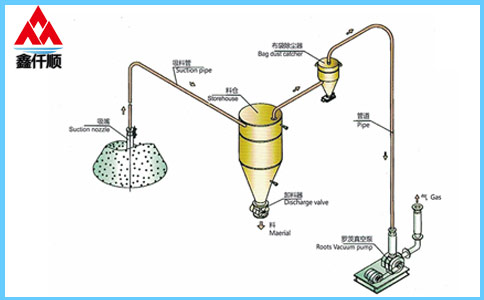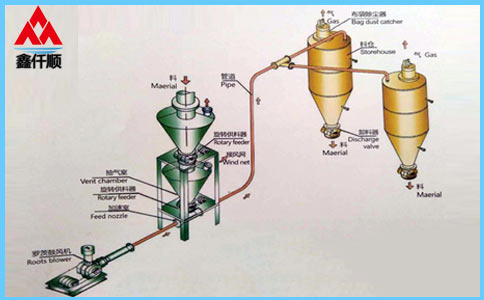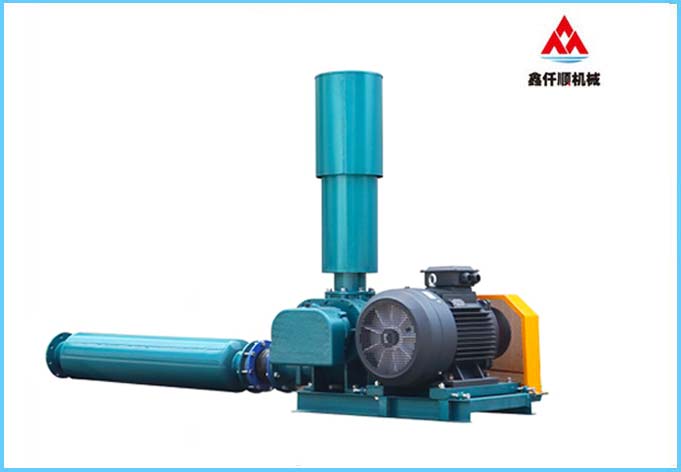By actual Roots Blower The use of, and spectrum analysis to understand the source of noise, not only can make the investigation and measurement of fan noise more purposeful, but also can provide scientific basis for the control and governance of fan noise. Today, I will take you to know how to control the noise of Roots blower.
1、 Select reasonable fan type.
For fans of the same series, if the wind pressure and air volume are large, the noise will inevitably increase. In addition, excessive fan margin not only consumes power, but also requires corresponding pipe network and operation system to reduce noise. For fans of the same model, if the performance allows, low speed fans should be selected as far as possible. When the fan reaches a certain flow rate, the speed should be reduced to reduce noise.
2、 Construction measures
Building measures can also be taken to reduce the noise of Roots blower. This method is not only simple in design, but also convenient in construction. Common building measures include: setting an independent machine room for the fan; A duty room with good sound insulation shall be established in the machine room for the duty personnel to contact and rest. The duty room shall avoid facing the doors and windows towards the machine room; The suction outlet should be set at a position that has no impact on the environment, and the air inlet should be set underground as far as possible, with a thick cover plate set above it; The air vent is very noisy and causes serious environmental pollution, so an anechoic pit or exhaust anechoic chamber can be built. The air outlet can also be placed in the pit or ditch outside the machine room according to the actual environment.

3、 Set enclosure Enclosure is set around the unit, which can effectively prevent the noise of the fan from being transmitted to the outside, so as to limit the noise within a certain range. This method is simple and easy both in building new plants and in noise control. The enclosure structure of the unit usually uses heavy materials, such as 240 thick brick walls, 200 thick aerated concrete blocks, etc., and direct vents or other sound transmission ports should be avoided as far as possible to improve the enclosure structure's closeness and sound insulation capacity. Of course, totally enclosed fan sound insulation room can also be used, and 60mm thick microcellular foam plastic can be added to the inner wall of the sound insulation room; Felt shall be filled in the wall gap and air duct position to absorb noise. In addition, in order to minimize the damage to human body caused by fan noise for the personnel on duty, a duty room with sound insulation function should also be set up. The duty room should be equipped with a remote electromechanical integrated intelligent automatic control system that can display the working conditions such as temperature, wind pressure, and motor current in real time, as well as start, stop, fault alarm and other functions, so as to achieve human-machine separation.
4、 Foundation damping
During the operation of the fan, strong vibration and mechanical noise will be generated. The shock wave will be transmitted to other components through the fan body, and people will feel strong vibration from the ground when they are near the fan. In order to reduce mechanical vibration, the precision of the equipment should be improved to improve the operation of the fan, so as to reduce the coupling between the fan and other transmission media. To reduce the vibration transmitted by the fuselage through the ground, separate equipment foundation can be set to isolate the fuselage from the ground of the machine room, such as setting damping ditches or grooves around the foundation. Alternatively, some elastic materials, such as spring shock absorber, can also be used as the isolation device of the engine base. This method has been adopted in many projects with good results.
5、 Setting the silencer
It is an effective measure to install silencers on the air inlet duct and exhaust duct of the fan to control the fan noise, which can effectively reduce the air flow noise. There are certain principles in the type and selection of silencers. The common silencers matching the inlet and exhaust pipes of the fan are: resistive silencers suitable for medium and high frequency, reactive silencers suitable for medium and low frequency, micro perforated plate silencers suitable for low and medium frequency broadband silencing, and combined special silencers.
6、 Proper treatment of fan noise in the piping system will spread through the air duct. Therefore, reasonable treatment of the piping system is also one of the methods for fan noise control. There are mainly the following methods for handling air ducts:
1. If conditions permit, the inner wall of the air duct can be properly thickened to increase the rigidity of the duct and reduce the regenerative noise caused by vibration, such as installing 4-6 mm steel plates.
2. The bend or joint of air duct shall be treated flexibly, which can reduce the noise caused by air flow impact. Elastic cushion and flexible pipe section shall be installed at the place where the pipe passes through the wall and contacts with the support. The support shall have sufficient rigidity, and the contact between the support and the ground shall be subject to shock absorption. It has good effect on shock absorption and noise reduction. The pipe support shall have sufficient rigidity, and the contact between the support and the ground shall be properly damped.
3. If conditions permit, reduce the wind speed and increase the pipe diameter. This not only helps to reduce the air flow noise, but also enables the muffler to play a better role in practice.
4. Add damping materials on the outer wall of the air duct. When the high-speed airflow passes through the pipe wall, it will hit the pipe wall to form high-frequency vibration. Adding damping materials on the outer wall can effectively reduce the vibration frequency. For example, wrapping straw rope on the outer wall of the pipeline, or directly installing a wooden cover on the outer wall of the pipeline, and filling sawdust in the wooden cover, all have good effects. Damping materials should preferably be anti-corrosion and fireproof inorganic materials, such as mineral wool, perlite, etc.










